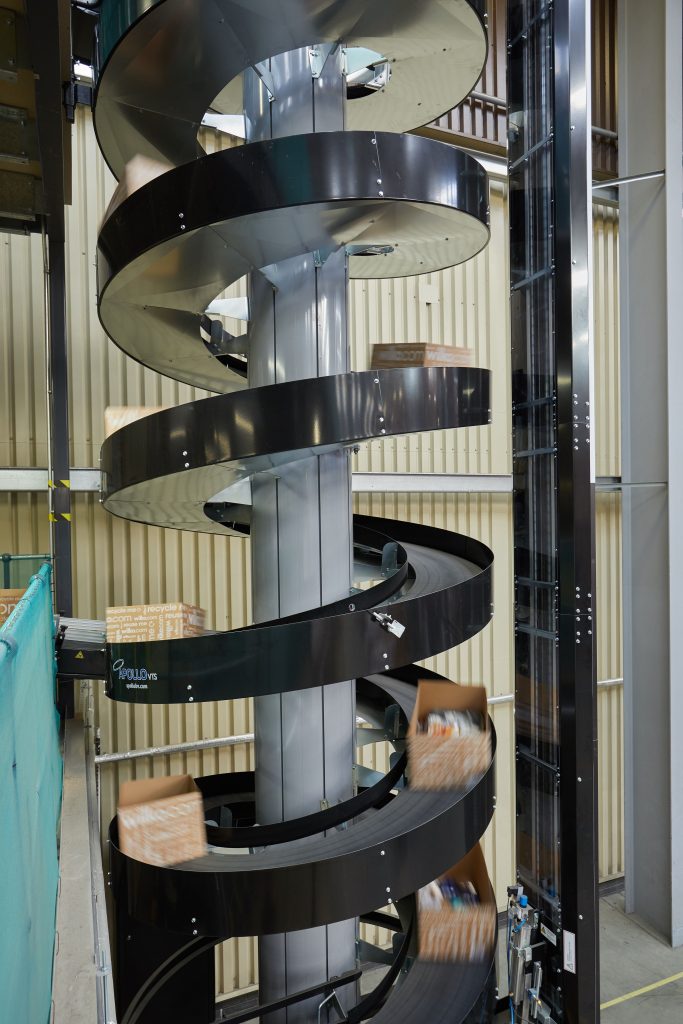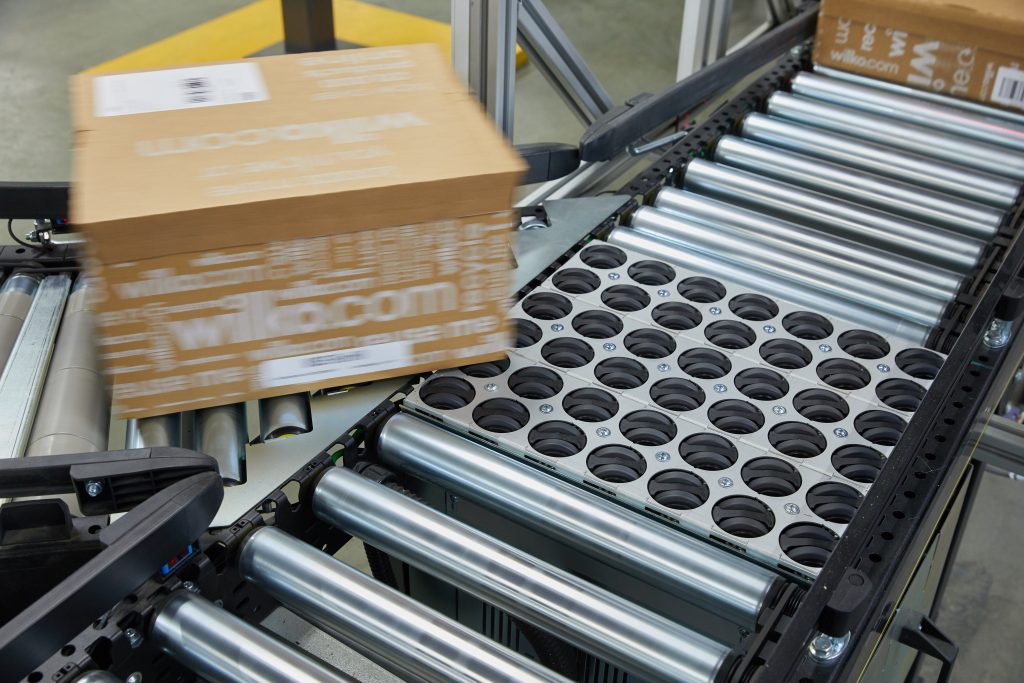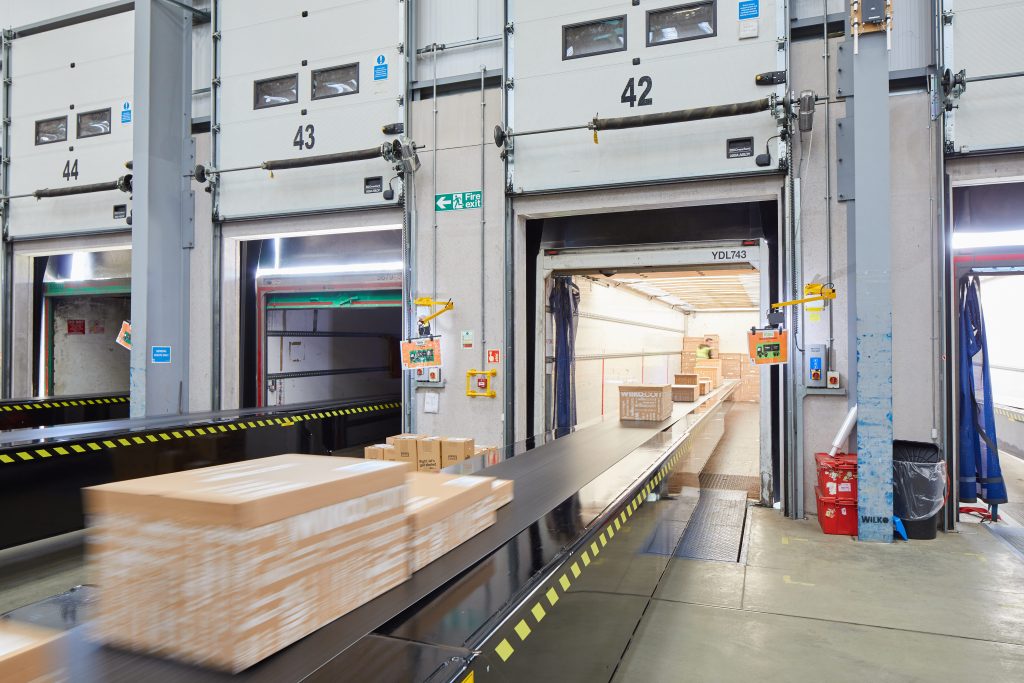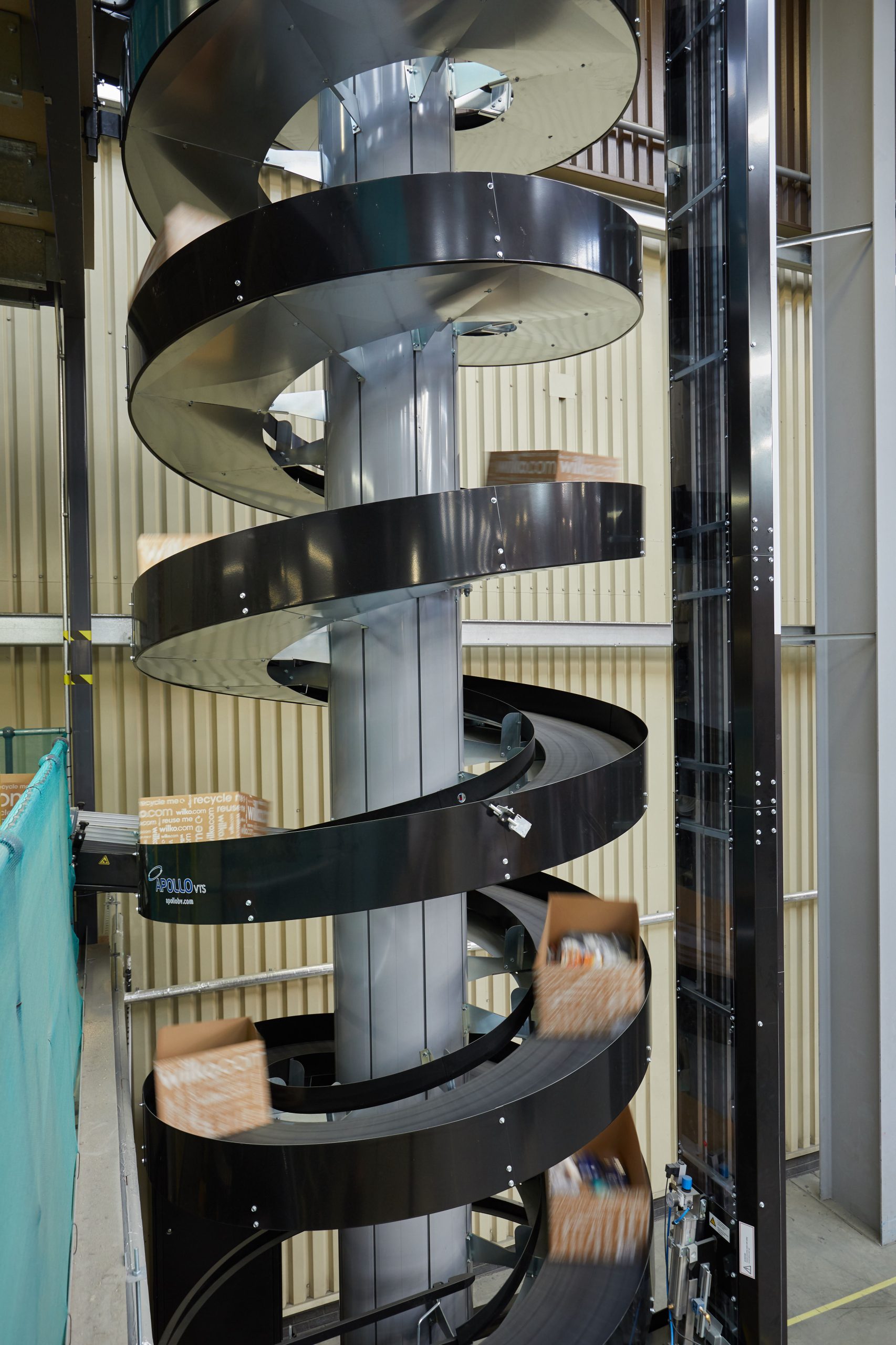AMH Material Handling has completed a £3.2 million project for Wilko at its 110,000 sq ft e-fulfilment facility managed by Clipper Logistics in Ollerton.
The project has automated the packaging, labelling and destination sortation for 85 per cent of online orders for both home and store delivery. The logistics solution, which was implemented ahead of Black Friday, handled a quarter of a million items in the first month of its operation.
- £3.2 million project
- 110,000 sq ft facility
- 85% of online orders automated
- 250,000+ items handled in 1st month

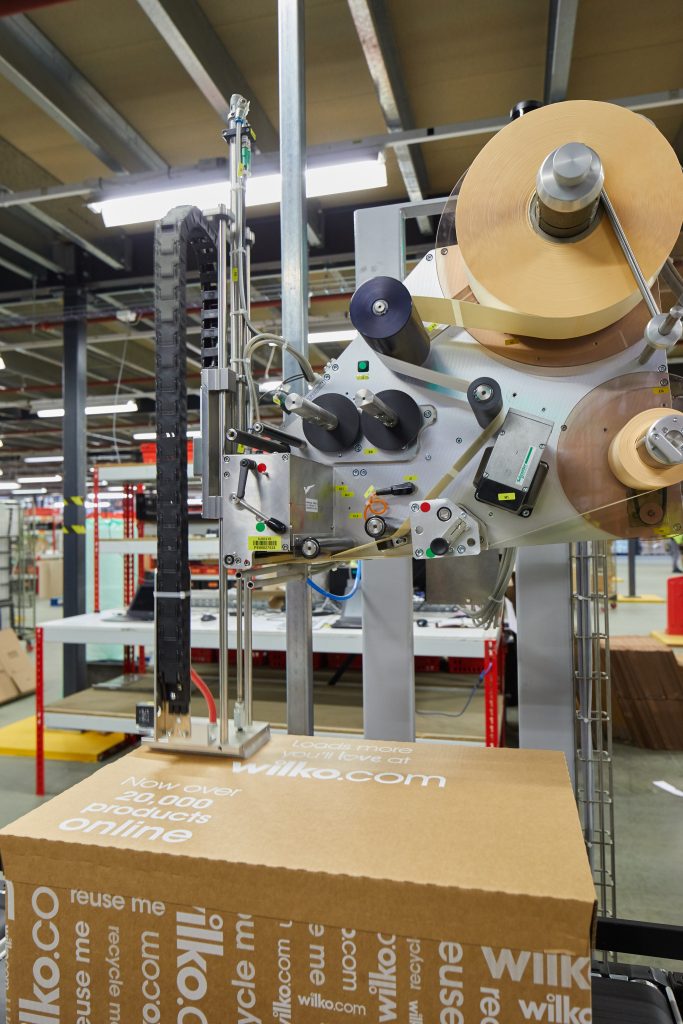


Finding a complete solution
Colin Holland, project manager, Clipper Logistics explains, “Wilko needed to facilitate growth and make room for extra product storage. In addition to this, they wanted to limit reliance on manual labour. This was especially important during peak order times when it was difficult to source additional colleagues at short notice. Furthermore, the system needed to increase throughput efficiencies and accuracy.
“We asked three different companies to tender for the project, however, the decision to select a supplier wasn’t solely based on cost. We also took into account the project timeline, their availability, the solution itself and how it would work for us. On this occasion, we decided AMH Material Handling met our criteria and presented us with the best option.”
“AMH came onto site and they interrogated our processes. They got to the bottom of what our issues were and came up with an innovative solution. They analysed our packaging and reduced our seven carton sizes down to four to simplify the operation.”
New automated packaging and despatch system
The bespoke solution has seen AMH install the automated system over three floors at Ollerton. A carton erecting machine has been installed on each of the two mezzanine floors along with licence plate number (LPN) labelling machines. The first floor handles small and medium sized cartons and the second floor is for large and extra-large cartons. Once erected, the labelling machine applies a unique LPN to each carton so that it can be correctly tracked and routed throughout the system.
Completed orders on the mezzanine floors are placed onto a conveyor infeed which merges them onto a powered spiral conveyor. The spiral conveyor transports cartons down to the ground floor where they join the main conveyor system. AMH also installed a multilevel goods lift so that trollies carrying orders requiring picks from more than one floor could be easily moved between the three levels.
Once on the main system, cartons travel down a decline conveyor where they merge with any cartons inducted from the ground floor infeed. Cartons continue to travel down the line and turn a 180 degree bend before being checked automatically for their expected weight. The warehouse control system (WCS) validates the actual completed order weight against the system’s expected weight and any cartons with weight issues are diverted to a reject spur for rectifying.
Further down the conveyor line, the warehouse management system (WMS) alerts the conveyor if a carton contains any fragile items. If so, the system diverts the carton to the fragile repack work benches. Here, colleagues suitably repack any fragile items before placing the carton back onto the main conveyor system.
After items have passed both the weight and fragile repack stations, one of three document inserting machines place the customer’s shipping note into each carton. When the shipping notes have been placed into the cartons, they are then sorted by size before they reach either of the two carton lidding machines. The machine measures the height of the products and reduces the carton to a suitable height. Folding the carton to remove empty space and sealing it with glue increases the strength of the packaging. A lid is then automatically placed and sealed on top of the carton.
Once lidded, the cartons run through two labelling systems. The first label machine applies the shipping labels, with the destination address, to the top of the cartons. The second label machine applies a label to the side of each carton with both the customer’s name and the carton weight.
This is important for store orders as it allows colleagues to easily identify customers’ parcels when they are stacked in store. As the labelled cartons continue to travel to the despatch area, they are scanned again to ensure that both the LPN and the shipping label match up correctly.
In the despatch area, AMH has installed a total of eight despatch lanes. The first four lanes are used for the parcel carrier companies. Here, AMH has installed four telescopic loading booms to transfer the parcels directly into the back of the trailers for rapid loading. Three of the remaining despatch lanes transport parcels for in-store collect orders whilst the eighth lane is a reject lane for any incorrect or unreadable parcels.
AMH provided the controls and software to operate the automated system. A new WCS was designed and installed by AMH to integrate with the customer’s WMS. This allows orders to be processed automatically throughout the integrated solution. AMH also supplied a SCADA (supervisory control and data acquisition) software system. The SCADA displays a real time model of the system which can be accessed from any computer terminal on-site by both the operational team and AMH’s engineers.
Overcoming project challenges
Colin Holland continues, “Initially, we asked AMH to come up with a solution for a facility at a different location, however, our plans changed and we decided to stay at Ollerton. This was a challenge for AMH as the Ollerton site is spread over three floors which wasn’t part of the initial design. Additionally, the site was fully operational and AMH needed to come up with a time plan to install the system without disrupting the day to day operations.
“Despite the site change delaying the start date, our end deadline remained the same and we still needed to be running in time for Black Friday. Throughout the installation process, AMH handled everything on-site in order to meet our deadline. They appointed a project manager to run the site, however, the directors were always available when we needed them."

An extremely successful project and partnership
Colin Holland concludes, “The system that AMH has designed is capable of handling our forecasted peak throughput capacity up to 2020/21. In addition to this, the system is fully adaptable so if our volumes should change, we can add additional automation to accommodate an increase in order processing.
“Overall, AMH surpassed our expectations. The quality they have delivered throughout the entire project has been second to none, they couldn’t have been more efficient. During the whole process they have been extremely open, honest and helpful. It truly felt more like a friendship than a partnership – it’s been very refreshing working with them.
“Through AMH, we have employed two fulltime maintenance and service engineers who were involved with the commissioning and launch support to ensure site set up and familiarity. They now provide us with effective engineering site maintenance and support utilising the 24/7 telephone hotline and callout function.”
“With this high level of technical support always readily available it not only gives us total peace of mind that the automated system is always serviced and maintained, but also that it meets health and safety, and compliance requirements.”
